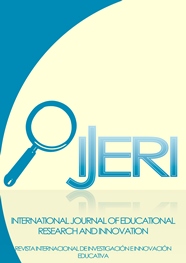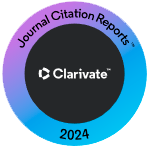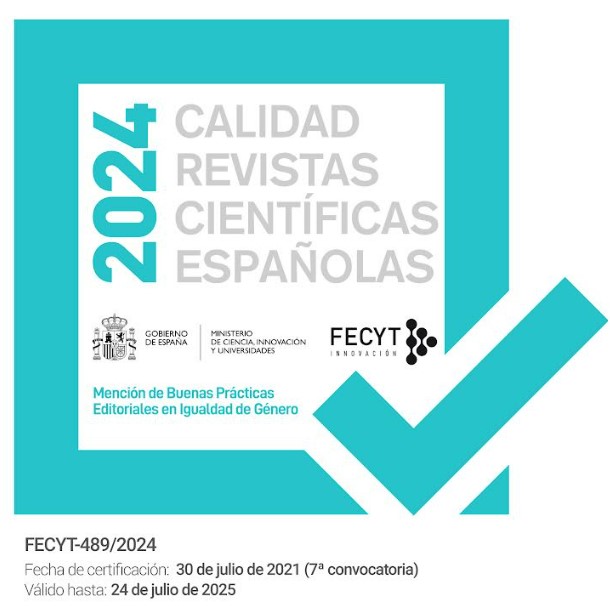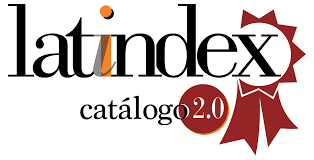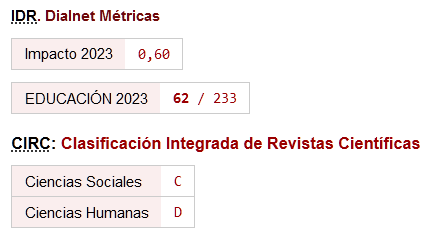Physical Education and Sports Lesson in Distance Education: Content Analysis of Videos on Youtube
DOI:
https://doi.org/10.46661/ijeri.5766Keywords:
Distance education, Youtube, physical education and sports.Abstract
In this study, it was aimed to examine how physical education and sports teachers taught lessons in the distance education process and which activities they included in the course content during the Covid 19 pandemic process. The videos published under the title of distance education physical education and sports lessons written in Turkish on YouTube were analyzed. The videos were analyzed using content analysis technique. Three themes were obtained as a result of the content analysis. These are the themes of "educational games", "practice" and "theoretical expression". As a result of the study, it was concluded that it was tried to meet the movement needs of students through videos uploaded to YouTube under the title of distance education physical education and sports lessons, what students should do to protect their health is supported by information within the framework of "health - sports" and it was tried to make the process fun through educational games during the period of staying at home. It is recommended to provide an in-service training course for teachers on how to handle physical education and sports lessons through distance education, especially in the Covid 19 pandemic process.
Downloads
References
Adıgüzel, R. (2010). İlköğretim okulları II. kademe öğrencilerinin spora bakış açılarının ve spor alışkanlıklarının değerlendirilmesi. Yüksek Lisans Tezi, Erciyes Üniversitesi, Sağlık Bilimleri Enstitüsü, Kayseri
Akalın, T. C., & Gümüş, M. Investigation of secondary school students' participation in physical education lessons with distance education in the pandemic process. African Educational Research Journal, 8(2) 266-272.
Akandere, M. (2006). Eğitici okul oyunları. 3. Baskı. Ankara: Nobel Yayın Dağıtım.
Akulwar-Tajane, I., Parmar, K. K., Naik, P. H., & Shah, A. V. (2020). Rethinking Screen Time during COVID-19: Impact on Psychological Well-Being in Physiotherapy Students. International Journal of Clinical and Experimental Medicine Research, 4(4), 201-216. https://doi.org/10.26855/ijcemr.2020.10.014
Allen, I. E., & Seaman, J. (2016). Online report card: Tacking online education in the United States. Newburyport, MA: Babson Survey Research Group
Altıparmak, M., Kurt, İ. D., & Kapıdere, M. (2011). “E-Öğrenme ve uzaktan eğitimde açık kaynak kodlu öğrenme yönetim sistemleri” Akademik Bilişim’11 - XIII. Akademik Bilişim Konferansı Bildirileri Kitabı, (pp.319-327). Malatya.
Aynacıyan, N., & Özer, M. K. (2020). Çocuklara Uygulanan Eğitsel Oyun Aktivitelerinin Motorik Özelliklerine Etkisi. Journal Of Health And Sport Sciences, 3(1), 24-31.
Banerjee, D. and Rai, M. (2020), "Social isolation in Covid-19: the impact of loneliness", The International Journal of Social Psychiatry, 66,(6), 525-527. https://doi.org/10.1177%2F0020764020922269
Brooks, S. K., Webster, R. K., Smith, L. E., Woodland, L., Wessely, S., Greenberg, N., & Rubin, G. J. (2020). The psychological impact of quarantine and how to reduce it: rapid review of the evidence. The Lancet. 395, 912–920. https://doi.org/10.1016/S0140-6736(20)30460-8
Burtscher, J., Burtscher, M., & Millet, G. P. (2020). (Indoor) isolation, stress and physical inactivity: vicious circles accelerated by Covid‐19?. Scandinavian journal of medicine & science in sports. 30(8), 1544-45. https://doi.org/10.1111/sms.13706
Cachón-Zagalaz, J., Sánchez-Zafra, M., Sanabrias-Moreno, D., González-Valero, G., Lara-Sánchez, A. J., and Zagalaz-Sánchez, M. L. (2020). Systematic review of the literature about the effects of the COVID-19 pandemic on the lives of school children. Front. Psychol. 11:569348. https://doi.org/10.3389/fpsyg.2020.569348
Carroll, N., Sadowski, A., Laila, A., Hruska, V., Nixon, M., Ma, D. W., & Haines, J. (2020). The impact of COVID-19 on health behavior, stress, financial and food security among middle to high income Canadian families with young children. Nutrients, 12(8), 2352. https://doi.org/10.3390/nu12082352
Castañeda-Vázquez, C., Corral-Pernía, J. A., and Chacón-Borrego, F. (2020). Influencia de la actividad física sobre la capacidad aeróbica en escolares españoles. J. Sport Health Res. 12(Suppl. 1), 31–38.
Cheng, X., Dale, C., & Liu, J. (2008). Statistics and social network of youtube videos. In 2008 16th Interntional Workshop on Quality of Service (pp. 229-238). IEEE.
Elo, S., & Kyngäs, H. (2008). The qualitative content analysis process. Journal of advanced nursing, 62(1), 107-115. https://doi.org/10.1111/j.1365-2648.2007.04569.x
Fairclough, S., Hilland, T., Stratton, G. ve Ridgers, N. (2012). Am I Able? Is It Worth It? Adolescent Girls’ Motivational Predispositions to School Physical Education: Associations With Health-Enhancing Physical Activity. European Physical Education Review, 18(2), 147–158. https://doi.org/10.1177/1356336x12440025.
Founaud, M. P., and González-Audicana, C. (2020). La vivencia emocional en los estudiantes de Educación Primaria en Educación Física. J. Sport Health Res. 12(Suppl. 1), 15–24.
Goad, T., Towner, B., Jones, E., & Bulger, S. (2019). Instructional Tools for Online Physical Education: Using Mobile Technologies to Enhance Learning. Journal of Physical Education, Recreation & Dance, 90(6), 40-47. https://doi.org/10.1080/07303084.2019.1614118
Guan, H., Okely, A. D., Aguilar-Farias, N., Cruz, B., Draper, C. E., El Hamdoouchi, A., et al. (2020). Promoting healthy behaviours among children during the COVID-19 pandemic. Lancet Child Adolesc. Health 4, 416–418. https://doi.org/10.1016/S2352-4642(20)30131-0
Hammami, A., Harrabi, B., Mohr, M., & Krustrup, P. (2020). Physical activity and coronavirus disease 2019 (COVID-19): specific recommendations for home-based physical training. Managing Sport and Leisure, 1-6. https://doi.org/10.1080/23750472.2020.1757494
Ivanov, V., & Tzankova, J. (2020). Onlıne dıstance educatıon on wordpress web based platform as an ınnovatıon ın the learnıng process of sports students from medıcal unıversıty – sofıa durıng the pandemıc of covıd-19. Pedagogy. 92(7). 143-51.
Jackson, C., Vynnycky, E., ve Mangtani, P. (2016). The relationship between school holidays and transmission of influenza in England and wales. American journal of epidemiology, 184(9), 644-651. https://doi.org/10.1093/aje/kww083
Jiménez-Pavón, D., Carbonell-Baeza, A., & Lavie, C. J. (2020). Physical exercise as therapy to fight against the mental and physical consequences of COVID-19 quarantine: Special focus in older people. Progress in cardiovascular diseases. 63(3): 386–388. https://dx.doi.org/10.1016%2Fj.pcad.2020.03.009
Karakaya, E ve Salici, O . (2016). Determination of the metaphorical perception of the students, aged 11 to 13, studying about popular sports branches in Isparta . International Journal of Social Sciences and Education Research , 2(3) , 855-869 . https://doi.org/10.24289/ijsser.279029
Kırık, M.A. (2014). Uzaktan Eğitimin Tarihsel Gelişimi ve Türkiye’deki Durumu, Marmara İletişim Dergisi, 21, 73-94.
La Velle, L., Newman, S., Montgomery, C., & Hyatt, D. (2020). Initial teacher education in England and the Covid-19 pandemic: challenges and opportunities. Journal of Education for Teaching, 1-13. https://doi.org/10.1080/02607476.2020.1803051
Lee J. Mental health effects of school closures during COVID-19. Lancet. Child Adolesc. Health, 23(52)-4642(20)30109-7. https://doi.org/10.1016/S2352-4642(20)30109-7.
Lei, S. A., & Gupta, R. K. (2010). College distance education courses: Evaluating benefits and costs from institutional, faculty and students’ perspectives. Education, 130(4), 616-631.
Liu J.J., Bao Y., Huang X., Shi J. ve Lu L. Mental health considerations for children quarantined because of COVID-19. Lancet. Child Adolesc. Health, 4(5):347–349. https://doi.org/10.1016/S2352-4642(20)30096-1.
Macnamara, J. R. (2005). Media content analysis: Its uses, benefits and best practice methodology. Asia Pacific Public Relations Journal, 6(1), 1.
Mattioli, A. V., Sciomer, S., Cocchi, C., Maffei, S., & Gallina, S. (2020). Quarantine during COVID-19 outbreak: changes in diet and physical activity increase the risk of cardiovascular disease. Nutrition, Metabolism and Cardiovascular Diseases, 30(9), 1409-1417. https://doi.org/10.1016/j.numecd.2020.05.020
Mayring, P. (2014). Qualitative content analysis: theoretical foundation, basic procedures and software solution.. Klagenfurt. Retrieved January 11.2020. https://nbn-resolving.org/urn:nbn:de:0168-ssoar-395173
McKenzie, T. L., Marshall, S. J., Sallis, J. F. ve Conway, T. L. (2000). Leisure-time Physical Activity in School Environments: An Observational Study Using SOPLAY. Preventive Medicine, 30(1), 70–77. https://doi.org/10.1006/pmed.1999.0591
Moore, S. A., Faulkner, G., Rhodes, R. E., Brussoni, M., Chulak-Bozzer, T., Ferguson, L. J., ... & Tremblay, M. S. (2020). Impact of the COVID-19 virus outbreak on movement and play behaviours of Canadian children and youth: a national survey. International Journal of Behavioral Nutrition and Physical Activity, 17(1), 1-11. https://doi.org/10.1186/s12966-020-00987-8
Muntaner-Mas, A., Vidal-Conti, J., Cantallops, J., Borràs, P. A., & Palou, P. (2017). Obesity and physical activity patterns among Balearic Islands children and adolescents: a cross-sectional study. Journal of Human Sport and Exercise, 12(2), 333-348.
Nafisah, S. B., Alamery, A. H., Al Nafesa, A., Aleid, B., & Brazanji, N. A. (2018). School closure during novel influenza: a systematic review. Journal of Infection and Public Health, 11(5), 657-661. https://doi.org/10.1016/j.jiph.2018.01.003
Namlı, A., Temel, C. ve Güllü, M. (2017). Ortaokul öğrencilerinin beden eğitimi dersine ilişkin ürettikleri meaforlar. Kastamonu Education Journal, 25(2), 479-496.
Odabaş, H. (2003). Internet Tabanlı Uzaktan Eğitim ve Bilgi ve Belge Yönetimi. Türk Kütüphaneciliği, 17(1), 22-36.
Orhan, R., & Yoncalık, O. (2016). Türkiye’deki ortaokul öğrencilerinin beden eğitimi ve spor alışkanlıkları. Kırıkkale Üniversitesi Sosyal Bilimler Dergisi, 6(1), 353-376.
Özbay, Ö. (2015). Dünyada ve türkiye’de uzaktan eğitimin güncel durumu. Uluslararası Eğitim Bilimleri Dergisi, 5. 376-394.
Özcan, G., Mirzeoğlu A.D., & Çoknaz, D. (2016). Öğrenci gözüyle beden eğitimi ve spor dersi ve öğretmeni. Abant İzzet Baysal Üniversitesi Eğitim Fakültesi Dergisi, 16 (1), 270-291.
Özer, M. (2020). Türkiye’de covıd-19 salgını sürecinde MİLLİ EĞİTİM BAkanlığı tarafından atılan politika adımları Educational Policy Actions by the Ministry of National Education in the times of COVID-19. Kastamonu Education Journal, 28(3), 1124-1129.
Patton, M. Q. (2002). Qualitative research and evaluation methods (3rd ed.). Thousand Oaks, CA: Sage.
Pedersen, B. K., & Saltin, B. (2015). Exercise as medicine – evidence for prescribing exercise as therapy in 26 different chronic diseases. Scandinavian Journal of Medicine & Science in Sports, 25(S3), 1–72. https://doi.org/10.1111/sms. 12581.
Physical Activity Guidelines Advisory Committee. (2018). Physical activity guidelines advisory committee scientific report. Washington, DC: US Department of Health and Human Services. Retrieved January 02. 2021. https://www.hhs.gov/ash/advisory-committees/2018-physical-activityguidelines-advisory-committee.html.
Pietrobelli, A.; Pecoraro, L.; Ferruzzi, A.; Heo, M.; Faith, M.; Zoller, T.; Antoniazzi, F.; Piacentini, G.; Fearnbach, S.N.; Heymsfield, S.B. Effects of COVID-19 Lockdown on Lifestyle Behaviors in Children with Obesity Living in Verona, Italy: A Longitudinal Study.(2020). Obesity, 28, 1382–1385. https://doi.org/10.1002/oby.22861
Powell, K. E., Paluch, A. E., & Blair, S. N. (2011). Physical activity for health: What kind? How much? How intense? On top of what? Annual Review of Public Health, 32(1), 349–365. https://doi.org/10.1146/ annurev-publhealth-031210-101151.
Rundle, A, G., Park, Y., Herbstman, J, B., Kinsey, E, W., & Wang, Y, C. (2020). COVID19-related school closings and risk of weight gain among children. Obesity (Silver Spring). 28:1008-1009. https://doi.org/10.1002/oby.22813
Sardinha, L. B., Marques, A., Minderico, C., & Ekelund, U. (2017). Cross‐sectional and prospective impact of reallocating sedentary time to physical activity on children's body composition. Pediatric obesity, 12(5), 373-379. https://doi.org/10.1111/ijpo.12153
Shahidi, S. H., Stewart Williams, J., & Hassani, F. (2020). Physical activity during COVID‐19 quarantine. Acta Paediatrica, 109(10), 2147-2148. https://doi.org/10.1111/apa.15420
Silva, R. C. A., Silva, V. L. D. F., & Silva, A. P. (2019). Distance learning for teaching in physical education. Motriz: Revista de Educação Física, 25(1). https://doi.org/10.1590/s1980-6574201900010002
Temel, C. ve Güllü, M. (2016). Draw a Physical Education Lesson. Education and Science, 41(183), 351-361.
Tzifopoulos, M. (2020). In the shadow of Coronavirus: Distance education and digital literacy skills in Greece. International Journal of Social Science and Technology, 5(2), 1-14.
Uğraş, S., & Güllü, M. (2020). Ortaokulda öğrenim gören öğrencilerin beden eğitimi dersindeki mutluluk düzeyleri ile yaşam doyumları arasındaki ilişkinin incelenmesi: Yapısal eşitlik modeli. Journal of History School 13(45). 583-599. http://dx.doi.org/10.29228/Joh40276
Valois, R. F., Zullig, K. J., Huebner, E. S., & Drane, J. W. (2004). Physical activity behaviors and perceived life satisfaction among public high school adolescents. Journal of school health, 74(2), 59-65. https://doi.org/10.1111/j.1746-1561.2004.tb04201.x
Varea, V., & González-Calvo, G. (2020). Touchless classes and absent bodies: teaching physical education in times of Covid-19. Sport, Education and Society, 1–15. https://doi.org/10.1080/13573322.2020.1791814
Von Hippel, P. T., & Workman, J. (2016). From kindergarten through second grade, US children's obesity prevalence grows only during summer vacations. Obesity, 24(11), 2296-2300. https://doi.org/10.1002/oby.21613
Who (2020) Coronavirus disease (COVID-19) pandemic. Retrieved January 06, 2020 https://www.who.int/emergencies/diseases/novel-coronavirus.
WHO. (2010). World Health Organization Global recommendations on physical activity for health. Geneva, Switzerland.
Williams, S.N., Armitage, C.J., Tampe, T. and Dienes, K. (2020), "Public perceptions and experiences of social distancing and social isolation during the COVID-19 pandemic: a UK-based focus group study", medRxiv, https://doi.org/10.1101/2020.04.10.20061267
Wong, C. W., Andrew, T. S. A. I., Jonas, J. B., Ohno-Matsui, K., James, C. H. E. N., Marcus, A. N. G., & Ting, D. S. W. (2020). Digital Screen Time During COVID-19 Pandemic: Risk for a Further Myopia Boom?. American journal of ophthalmology. 333-337. https://doi.org/10.1016/j.ajo.2020.07.034
Woods, J., Hutchinson, N., Powers, S., Roberts, W., Gomez-Cabrera, M., Radak, Z., Berkes, I., Boros, A., Boldogh, I., Leeuwenburgh, C., Coelho-Júnior, J., Marzetti, E., Cheng, Y., Liu, J., Durstine, L., Sun, J., &, Li Li Ji, S. (2020). The COVID-19 Pandemic and Physical Activity. Sports Medicine and Health science, 2(2)55-64. https://doi.org/10.1016/j.smhs.2020.05.006.
Workman, J. (2020). How Much may covıd‐19 school closures ıncrease childhood obesity?. Obesity, 28(10), 1787-1787. https://doi.org/10.1002/oby.22960
Xu, D., & Xu, Y. (2019). The promises and limits of online higher education: Understanding how distance education affects access, cost, and quality. Washington, DC: American Enterprise Institute.
Yalçınkaya, S. (2006). “Web Tabanlı Uzaktan Eğitim Sistemi ve Çukurova Üniversitesi Öğretim Elemanlarının Yatkınlıkları”, Yüksek Lisans Tezi, Çukurova Üniversitesi Sosyal Bilimler Enstitüsü İşletme Anabilim Dalı, Adana.
Yıldırım A, Şimşek H. (2011) Sosyal bilimlerde nitel araştırma yöntemleri, 8. Baskı Ankara, Seçkin Yayıncılık.
Zhai, Y. ve Du, X. (2020). Mental health care for international Chinese students affected by the COVID-19 outbreak. The Lancet Psychiatry, 7(4), e22. https://doi.org/10.1016/s2215-0366(20)30089-4
Zhong, B. L., Luo, W., Li, H. M., Zhang, Q. Q., Liu, X. G., Li, W. T., ve Li, Y. (2020). Knowledge, attitudes, and practices towards COVID-19 among Chinese residents during the rapid rise period of the COVID-19 outbreak: a quick online cross-sectional survey. International journal of biological sciences, 16(10), 1745. https://dx.doi.org/10.7150%2Fijbs.45221
Zullig, K. J., & White, R. J. (2011). Physical activity, life satisfaction, and self-rated health of middle school students. Applied Research in Quality of Life, 6(3), 277-289.
Downloads
Published
How to Cite
Issue
Section
License
Copyright (c) 2021 Ahmet Enes SAĞIN

This work is licensed under a Creative Commons Attribution-NonCommercial-NoDerivatives 4.0 International License.

